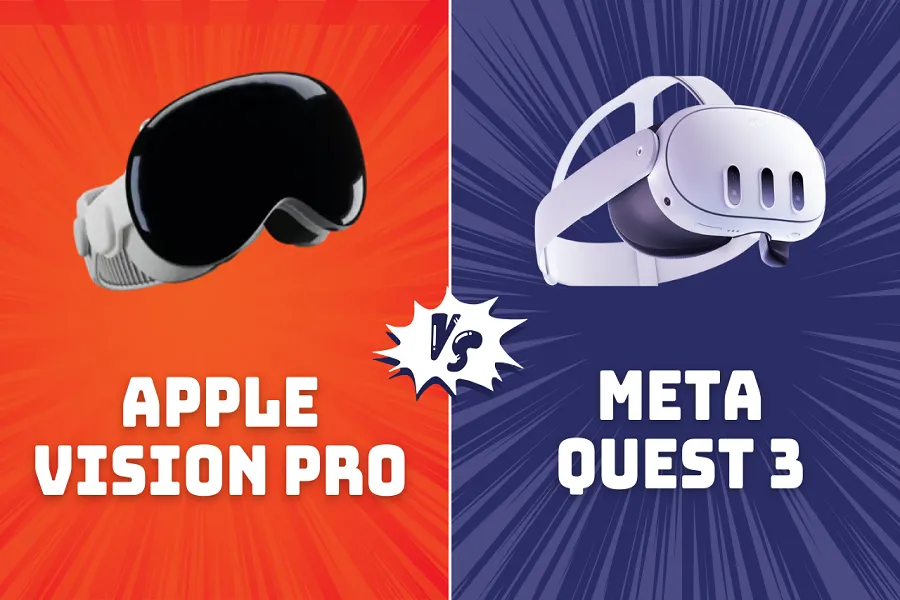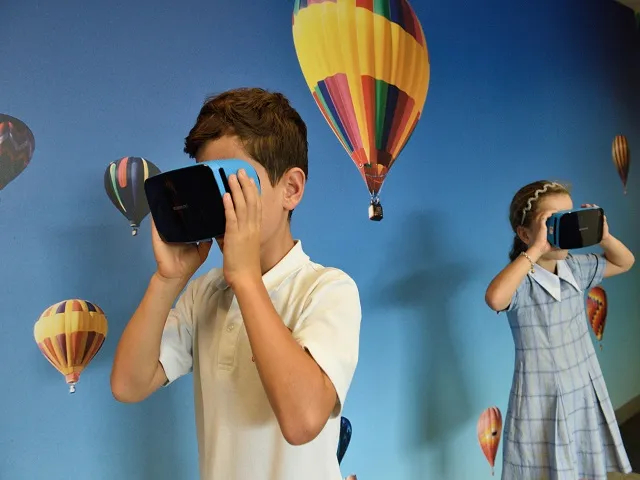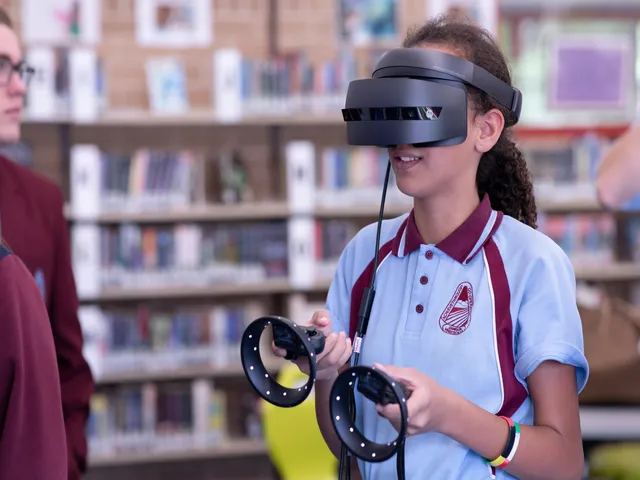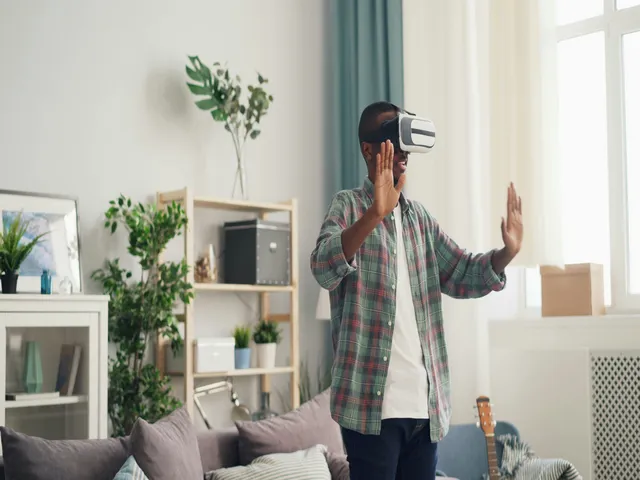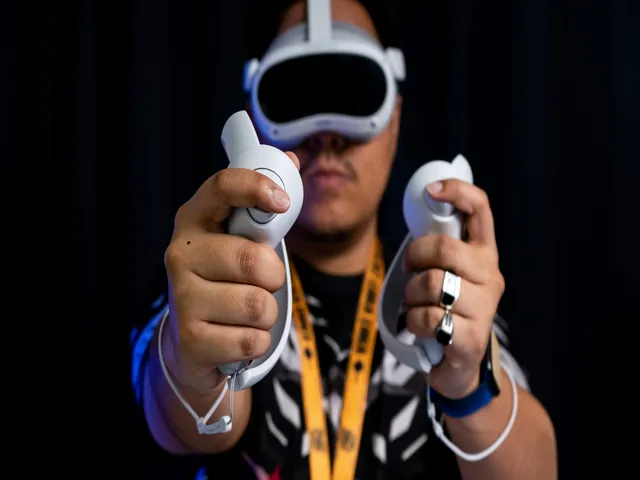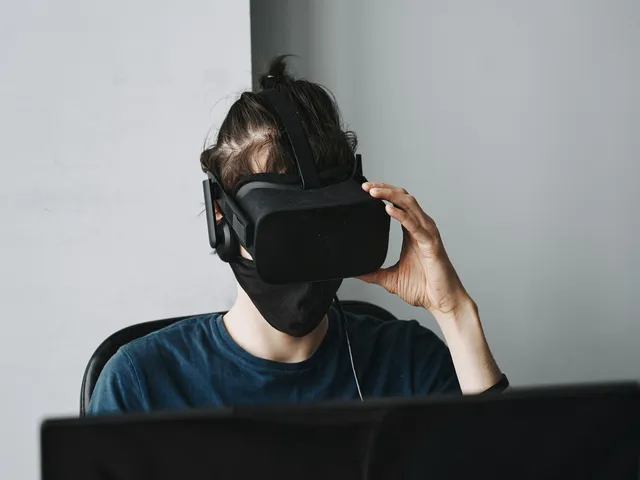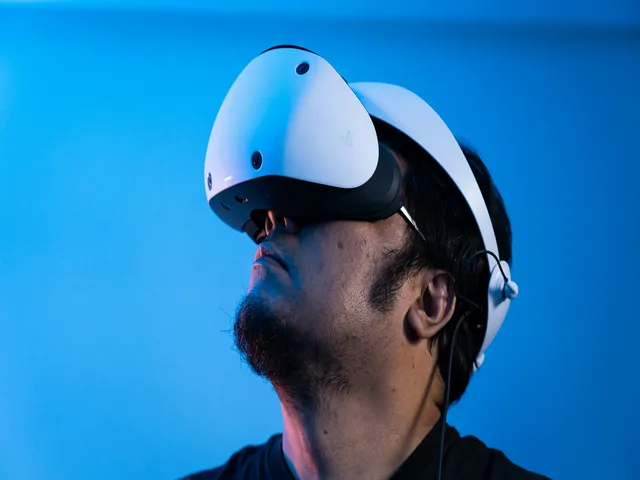Virtual reality technology has come a long way from bulky headsets requiring external processing units. Modern VR headsets enable immersive standalone experiences with powerful onboard processors and high resolution displays.
This has made VR accessible to consumers and developers alike. The Apple Vision Pro and Meta Quest 3 are two leading brands in the current VR headset market. The Apple Vision Pro delivers Apple’s signature premium design and polished user experience.
On the other hand, the Meta Quest 3 builds upon years of experience in PC-optional VR with the Oculus brand. Both headsets promise cutting-edge performance and graphics. However, there are some key differences between the two that are worth considering.
In this blog, we do a deep dive on the specifications and features of these VR headsets. We identify their respective strengths and weaknesses for gaming, entertainment, and productivity uses.
Apple Vision Pro and Meta Quest 3 Technical Specifications
VR technology continues to forge ahead at a rapid pace. The Vision Pro and Quest 3 headsets pack best-in-class hardware specifications and deliver ultra-sharp visuals along with smooth performance.
Vision Pro contains Apple’s proprietary XR-2 processors while the Meta Quest 3 utilizes Qualcomm’s XR2+ chip. These high-end system-on-chips enable brilliant graphics in movies to watch in VR and seamless interaction.
Below we have shared a comparison table of both headsets so you can learn about the two quickly. The information has been obtained from their official website, so you can visit their website to find more.
| Feature Name | Apple Vision Pro | Meta Quest 3 |
|---|---|---|
| Processor | Apple M2, Apple R1 | Snapdragon XR2 Gen2 |
| Display Resolution | 3660×3200 per-eye | 2064×2208 per-eye |
| Storage | 256GB, 512GB, 1TB | 128GB, 512GB |
| RAM | 16GB | 8GB |
| Refresh Rate | 100 Hz | 120Hz |
| FOV (degrees) | 110° | 110° |
| Battery Life | 2 Hours | 2.2 Hours |
| Audio | Stereo Speakers | Stereo Speakers |
| Weight | 600g | 515g |
| Price | $3499 (headset only) | $499.99 USD |
Apple Vision Pro vs Meta Quest 3: Detailed Comparison
With advances in processing power and graphics capabilities, latest VR headsets have become full-fledged platforms for entertainment and productivity uses beyond just gaming.
While Apple Vision Pro and Meta Quest 3 VR headsets offer frictionless access to virtual worlds, their capabilities differ in key respects. The Apple Vision Pro prioritizes continuity across Apple’s walled garden of services and devices.
Meanwhile, the Meta Quest 3 reinforces Meta’s focus on open platforms and social connection through the metaverse. Below we delve into some of the main areas where these headsets diverge in terms of features and functionality.
Design and Build Quality Comparison
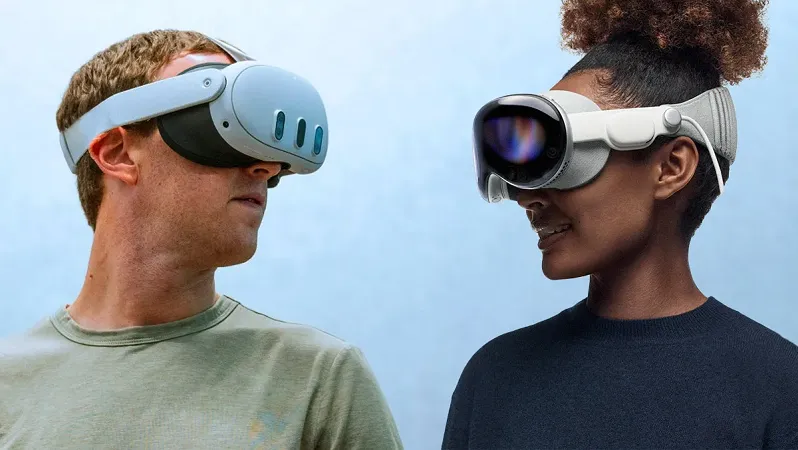
Both the Apple Vision Pro and Meta Quest 3 showcase cutting-edge design and premium build quality. However, each takes a slightly different approach. The Apple Vision Pro employs a minimalistic aesthetic composed of aerospace-grade aluminum and specialized glass.
Its refined form factor with precision machining measures only 10mm thick and weighs 600-650 grams, making it lightweight and ergonomic for comfortable extended use. Meta’s Quest 3 adopts a more vibrant palette with an adjustable elastic head strap for versatile customization.
Constructed from impact-resistant polycarbonate and fabric face gaskets, it weighs 515 grams without comprising durability. Reports from early users cite that both feel very solid and well-engineered for virtual reality.
Display Technology and Visual Experience
As VR platforms, display technology defines the visual experience, and both headsets demonstrate leadership here. The Apple Vision Pro implements a striking Micro-OLED display with a Pancake lens system projecting 23 million pixels across its dual 3.660 x 3,200 resolution screens, delivering pixel densities exceeding 4K with nearly 60 PPI.
Meta’s Quest 3 also utilizes next-gen displays, though its single 4K+ screen is divided between the eyes with a combined resolution of 2,064 x 2,208 per eye. Early analysis reveals Apple achieving a 25% boost in sharpness thanks to its dual-stacked design.
Additionally, both support refresh rates up to 120Hz but the Apple takes it a step further with its LiDAR-based foveated rendering, where higher detail is focused exactly where the user looks.
Combined with its superior pixel fill and optics, many argue the Apple Vision Pro provides more presence and less screen door effect during use.
Performance and Processing Power
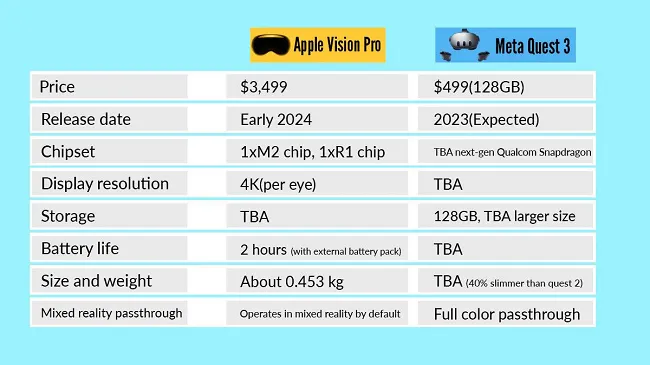
Both VR headsets pack powerful processing hardware but the Apple Vision Pro displays a notable advantage. It utilizes Apple’s new M2 and R1 chips featuring an Octa-core CPU with 8 performance cores delivering around 20% increased single and multi-threaded performance compared to the Quest 3’s Snapdragon XR2 Gen 2 chip.
The M2 also boasts a powerful 10-core GPU with up to 25% faster graphics rendering than the previous M1 model. All this occurs within an efficient 5-watt thermal envelope. Meanwhile, the R1 chip focuses solely on computer vision and sensor duties. This enables the Vision Pro to deliver mixed reality experiences with 25% lower latency than high-end gaming PCs.
The Quest 3 manages to perform impressively as well with its XR2 Gen 2 increasing graphics performance by 100% over the Quest 2. However, early benchmark results show the Vision Pro processing graphical tasks around 30% faster on average.
Mixed Reality Capabilities
Both headsets take big steps forward with mixed reality, but the Apple Vision Pro may have an edge. Its dual 6.5MP cameras provide full-color mixed reality views to the wearer with nearly 4.5x higher resolution than the Quest 3.
Additionally, the Vision Pro leverages its LiDAR scanner and R1 chip’s computer vision prowess to accurately map rooms and track hands/objects down to the millimeter in real-time. This allows for seamlessly merging virtual world with multiplayer VR games as well as physical world, too.
The Quest 3 achieves a strong mixed reality experience through its dual RGB cameras with depth sensing as well, enabling full-color passthrough.
Yet reports indicate its room scanning and virtual object placement can lack the Vision Pro’s precision at times. Only field experience will determine how this impacts the feeling of true mixed reality.
Software Ecosystem and Compatibility

The Apple Vision Pro operates using Apple’s new visionOS software, building upon their proven track record with platforms like iOS and macOS. It provides access to an expanding App Store focused exclusively on spatial computing experiences, promising over 500 optimized titles at launch.
Developers have strongly embraced building for the platform given Apple’s resources and large user base. The Meta Quest meanwhile runs on Android-based Quest OS with access to its App Lab and main Quest Store both boasting a massive library of native Quest games and apps according to Meta.
However, many titles will not take full advantage of the Vision Pro’s power due to being designed broadly for Android hardware. Overall, Apple’s curated ecosystem positions it for better compatibility and optimization long-term, but Quest provides users access to more software today due to its lead in the market.
Battery Life and Charging
Vision Pro brings impressive battery capabilities for VR. Its external battery attachment provides up to 2 straight hours of continuous use according to Apple researchers, and over 2.5 hours for video VR content. This allows extended play sessions without needing to pause for a charge.
Additionally, it can continue operating while connected to power, giving unrestricted use. The battery charges rapidly via included 30W USB-C adapter, replenishing from 0% to 50% in just 30 minutes based on Apple’s estimates.
Meanwhile, the Meta Quest 3 supports battery life around 2 hours for regular use. According to Meta, Quest 3 also permits charging while playing. However, its power pack is internal and not expandable, providing less flexibility compared to Apple’s modular battery solution.
Target Audience and Use Cases

The Vision Pro appeals primarily to prosumers and creative professionals seeking a high-end mixed reality device. Its sleek aesthetic and focus on visual quality over raw specs positions it as an aspirational product for graphics artists, videographers, and those working with 3D content.
Its business-friendly nature also makes it attractive for virtual meetings, design collaborations and spatial data visualization. Meanwhile, the Meta Quest 3 aims squarely at gamers and entertainment consumers looking for an affordable all-in-one option.
Its open platform and massive library of over 500 optimized titles at price points starting from $399 attract recreational users and those new to VR. Around 65% of Meta Quest owners play video games on it regularly according to surveys.
Price and Value for Money
The Apple Vision Pro carries a premium asking price starting at $3499 for the 256GB model. However, some argue this provides strong value given the device’s dedicated chips, higher resolution display, and focus on areas like photography and videography rather than raw specs.
After all, similar headsets like, ByteDance Pico 4 and from Varjo can cost over $7000 according to market reports. Meanwhile, the Meta Quest 3 starts quite affordably at $429 for 128GB of storage. At this price point it delivers many compelling features for both work and play, from powerful hardware to a large app library.
But enthusiasts hoping to replace high-end PCs for modeling or video work may find Apple’s polished experience and paired software ecosystem worth the investment long term.
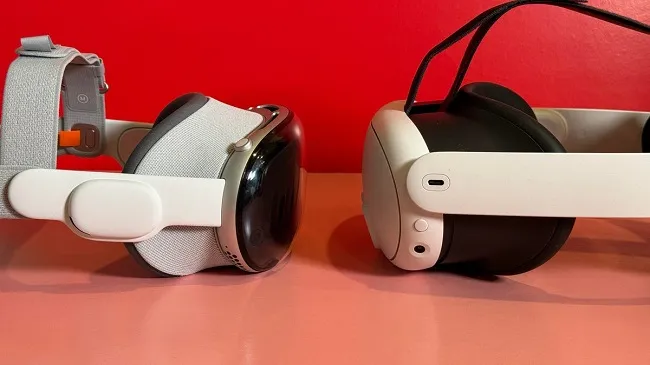
Overall, both provide fair value relative to the market, with Apple skewing towards professionals and Meta the mass consumer, given their different approaches to design, features and cost.
Which Device is Right for You?
With revolutionary technologies, choices abound but priorities vary. Whether you favor premium all-in-one experiences or open-platform versatility, both the Apple Vision Pro and Meta Quest 3 have pros and cons depending on your needs.
Consider factors like preferred ecosystems, types of content you consume, and how you intend to use your VR device. Gaming in robust virtual worlds? Socializing and creativity apps? Productivity and business tools?
Your decision also depends on considerations like hardware specs, software features, price differences and more. We hope of comparison of these latest VR headsets has helped you start to determine the right fit for your unique requirements.
Feel free to check back here on the 5thScape Blog as we continue evaluating new headsets and sharing the latest VR news and analysis.
